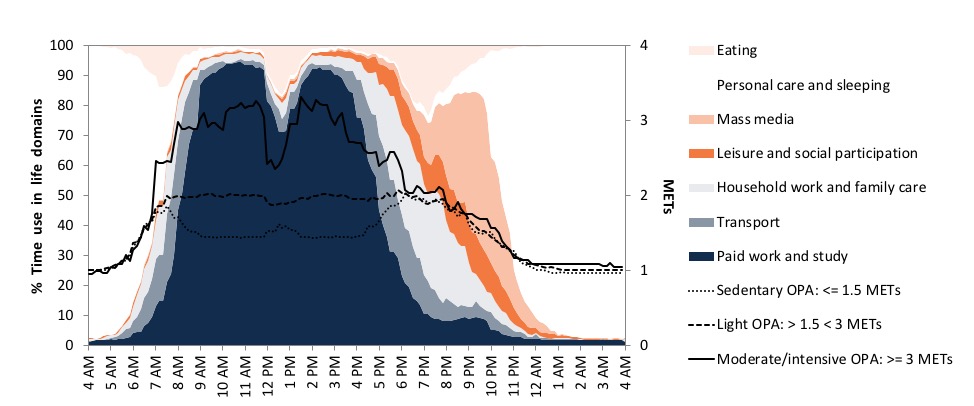Physical inactivity is major health risk
The World Health Organisation defines physical inactivity as a major risk factor for global mortality. Scholars have started to investigate physical (in)activity throughout the day using accelerometers and pedometers. Although accurate on measuring acceleration and distance and pace, the context within which this happened remains unknown. Time-use diaries provide this context because they capture individuals’ activities in a very detailed way. As a consequence, scholars have constructed a compendium that assigns scores of metabolic equivalent of tasks (METs) to an extensive list of daily activities. Studies reveal that using time-diary data to measure physical activity matches the results of using devices or validated questionnaires. On the plus side, though, time-diary data do reveal what people are doing.
Combine time-diary data with passive data collection
In a recent publication in a high impact academic journal we used this idea to compare physical activity during work and physical activity during non-work, subdivided in housework, leisure and travel. Not only did our insights support the need for a more holistic, contextual approach to measuring daily physical activity, they also allowed us to formulate the next step forward: combine the contextual richness of time-diary data with the accuracy of objective, passive data collection devices.

Throughout a weekday, women from different occupational physical activity (OPA) categories (i.e. sedentary, light, and moderate/intensive) vary in their physical activity (indicated by black lines and measured in METs) during paid work (dark blue) and household work and family care (light blue) but not during leisure (orange tones).
Source: Van Tienoven, TP et al. (2018). Active work, passive leisure? Associations between occupational and non-occupational physical activity on weekdays. Social Science Research, online first.




